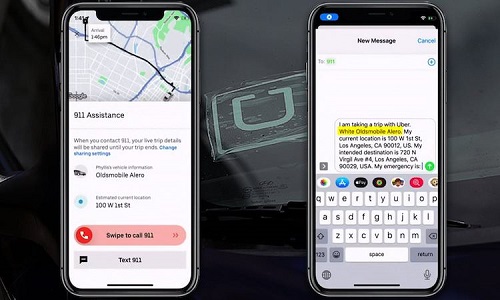
8.30.22 – The Verge
Uber is overhauling its four-year-old app safety toolkit, adding a new feature for riders to contact security company ADT during rides. The company is also expanding the availability of a feature enabling customers to text 911.
The safety toolkit is a section of Uber’s app through which customers can contact emergency services, report a safety issue to the company, or share their location with a family member or friend. It was first rolled out in 2018 as a way to address the company’s abysmal record on safety. Uber claims its rides are getting safer, and today’s announcement is meant to reflect these improving conditions.
“With so many safety features, it is time for an upgrade,” Rebecca Payne, the company’s lead safety product manager, said in a statement.“WITH SO MANY SAFETY FEATURES, IT IS TIME FOR AN UPGRADE”
Uber says the overhaul is intended to make the toolkit easier to access within the app. Tapping the shield-shaped icon will bring up four options: contact 911, contact an ADT safety agent, share trip status, or report a safety issue to the company.
Contacting an ADT safety agent is one of the newest features in the toolkit. Uber posits that some riders may find themselves in a situation that doesn’t qualify as a 911-level emergency but still may need to be reported. In those instances, customers can call or text an ADT agent, who can stay in contact for the duration of the trip or even contact 911 on behalf of the rider. Payne says the ability to reach out to ADT is for “additional peace of mind knowing that help is available right in the app for any situation.”
When customers do need to contact 911 but need to do so discretely, Uber is expanding its text-911 function to more cities. The company says that 60 percent of markets will now have the feature, including all of California and New York. Uber first added an in-app panic button in 2018 for riders and drivers to contact 911 directly. The text-911 feature followed in 2019, when it was first rolled out in Los Angeles, Minnesota, and Indiana.
Uber has been periodically making changes to its app around this issue for years. In 2020, the company pushed an update to let riders discreetly report instances that may not rise to the level of an emergency but still made them feel unsafe while on a trip. The examples that Uber gives include “harsh braking,” “inappropriate remarks,” or a driver who isn’t paying attention to the road.
When a customer tries to use the feature, the Uber app will prepopulate the initial message with vehicle details, location, and destination information, so customers can quickly communicate that information to emergency dispatchers, the company says.
Uber claims that the vast majority of its rides end without incident. Indeed the company’s most recent safety report, which covers 2019–2020, noted a 38 percent drop in sexual assaults as compared to the previous report.
